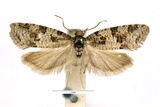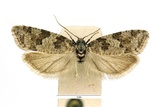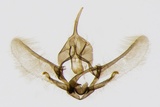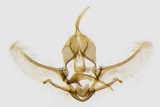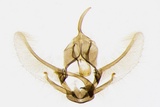Cnephasia incertana (Treitschke, 1835) Species
Last modified: Oct. 2, 2025, 2:22 p.m.
A not so common species throughout Belgium, distribution after 2004 based on determination via genitalia.
Details
- Classification
- Family: Tortricidae > Subfamily: Tortricinae > Tribus: Cnephasiini > Genus: Cnephasia > Subgenus: Cnephasiella > Species: Cnephasia incertana
- Vernacular names
- Spikkelbladroller (NL), Light Grey Tortrix (EN), Kleiner Grauwickler (DE)
- Synonyms
- Cnephasia minorana (Herrich-Schäffer, 1851)
- First mention in Belgium
- De Fré Ch. 1858. Catalogue des Microlépidoptères de la Belgique. — Annales de la Société entomologique belge 2: 45–162. On page 79.
- Status
-
Native
Distribution
Bionomics
The young larva mines in the leaves, but after hibernation it lives between spun leaves, twisting those of tender shoots. Pupation in a folded leaf or amongst detritus.
The moths are active in the evening and later come to light.
Flight periods
The adults have been observed from early May till mid-July. The earliest record is 9 April (gen. det.)
Observed on
- Substrates:
- Polyphagous
The polyphagous larva feeds on a wide range of plants like Medicago lupulina, Centaurea, Tragopogon pratensis, Chrysanthemum, Plantago, Rumex, Ranunculus, Lotus, and even Malus. More than 200 food plants are known.
Habitat
It prefers woodland edges and hedgerows.
